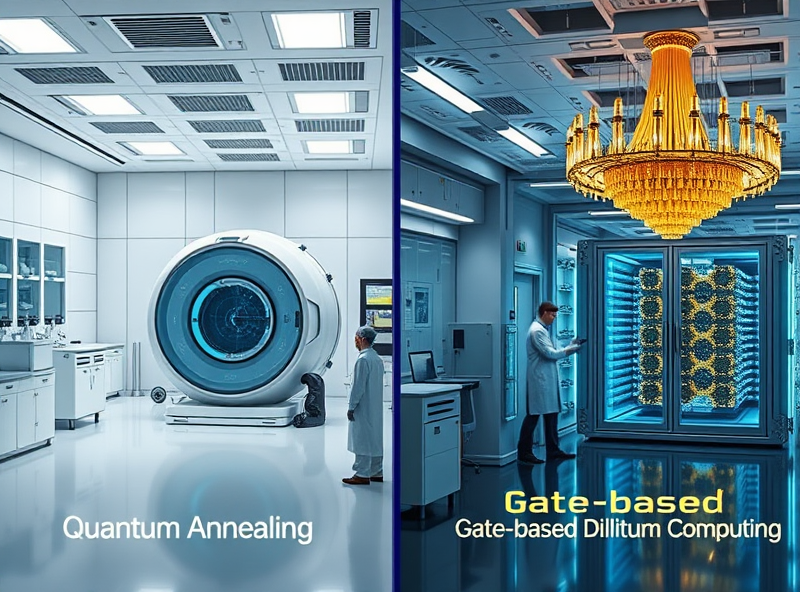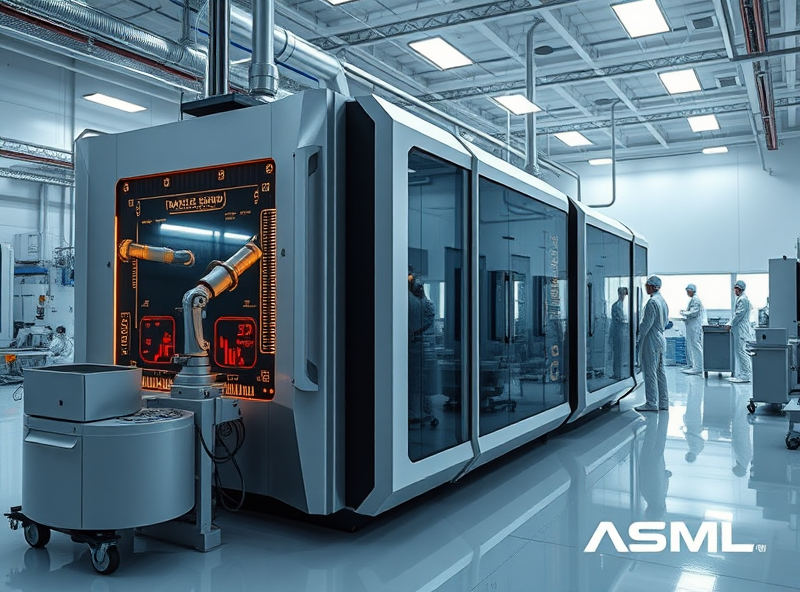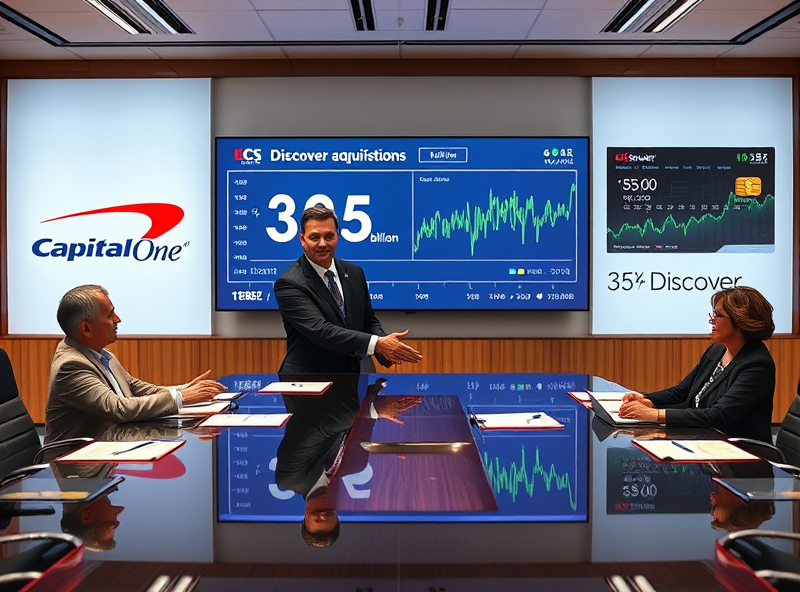
D-Wave Quantum (QBTS) Stock Outlook: Risks and Opportunities Explained
Financial Health and Valuation Metrics

When evaluating D-Wave Quantum Inc. (QBTS), it’s essential to understand its financial health and valuation metrics, especially given its position in the emerging quantum computing industry. As a pre-revenue company, D-Wave is still in its early growth phase, which means traditional profitability metrics like P/E ratios are not applicable. Instead, investors should focus on cash burn rate, debt levels, and liquidity.
D-Wave reported a net loss of over $50 million in its most recent fiscal year, which is not uncommon for tech startups. However, its cash reserves are limited, raising concerns about the need for future capital raises that could dilute existing shareholders. According to its latest filings, the company had approximately $10 million in cash and equivalents, which may only support operations for a few quarters unless additional funding is secured.
From a valuation standpoint, D-Wave’s market capitalization fluctuates with investor sentiment around quantum computing. It’s currently trading at a high price-to-sales ratio, reflecting speculative optimism rather than fundamentals. This makes it crucial for investors to assess the company’s roadmap for commercialization and partnerships with enterprises or governments.
In summary, while D-Wave holds promise in a cutting-edge field, its financial metrics suggest high risk. Investors should be cautious and monitor its burn rate, funding strategies, and milestones toward revenue generation.
Source: https://www.sec.gov/edgar/browse/?CIK=0001776757
Quantum Annealing vs. Gate-Based Tech

When evaluating D-Wave Quantum Inc. (QBTS) as a potential investment, it’s essential to understand the fundamental difference between quantum annealing and gate-based quantum computing. These two approaches represent distinct technological paths in the quantum computing landscape, each with its own set of strengths, limitations, and implications for commercial viability.
Quantum annealing, the core technology behind D-Wave’s systems, is designed to solve optimization problems by finding the lowest energy state of a system. This method is particularly well-suited for tasks like logistics, scheduling, and machine learning model tuning. It’s faster and more scalable for specific use cases, and D-Wave has already commercialized this technology with real-world clients.
In contrast, gate-based quantum computing—pursued by companies like IBM and Google—aims to perform general-purpose quantum computations using quantum bits (qubits) and logic gates. While gate-based systems are theoretically more powerful and flexible, they are still in earlier stages of development and face significant challenges in error correction and scalability.
For investors, the key takeaway is that D-Wave’s focus on quantum annealing offers a more immediate path to monetization, albeit in a narrower application space. Gate-based systems may hold long-term promise, but they are further from commercial readiness. Understanding this distinction helps clarify the risks and opportunities associated with QBTS stock.
For a deeper dive into the differences, the U.S. Department of Energy offers a helpful overview: https://www.energy.gov/science/doe-explainsquantum-computing
Analyst Opinions and Market Sentiment

When evaluating the stock outlook for D-Wave Quantum Inc. (QBTS), understanding what analysts and the broader market think is essential. As a company pioneering quantum computing solutions, D-Wave has attracted both optimism and caution from investors and analysts alike.
Currently, analyst coverage on QBTS is limited due to its relatively small market capitalization and emerging technology focus. However, among those who do follow the stock, there is a cautiously optimistic tone. Analysts recognize D-Wave’s potential in revolutionizing sectors like logistics, AI, and cryptography through quantum annealing technology. Still, they also highlight the company’s financial challenges, including high R&D costs and a path to profitability that remains uncertain.
Market sentiment, as reflected in social media trends and retail investor platforms like Reddit and StockTwits, shows a mix of speculative enthusiasm and skepticism. Many retail investors are intrigued by the long-term promise of quantum computing, while others remain wary due to the stock’s volatility and the broader uncertainty in the tech sector.
Institutional interest in QBTS remains modest, which is typical for early-stage tech firms. However, any increase in partnerships or government contracts could shift sentiment positively. Investors should monitor quarterly earnings reports, technological milestones, and industry developments to gauge future sentiment shifts.
For a deeper dive into the company’s fundamentals and recent performance, you can refer to their latest SEC filings: https://www.sec.gov/edgar/browse/?CIK=0001819994
Investment Risks and Growth Catalysts

D-Wave Quantum Inc. (QBTS) is one of the few publicly traded companies focused exclusively on quantum computing, a field with immense long-term potential but also significant near-term uncertainties. Understanding the risks and growth catalysts is essential for investors looking to make informed decisions.
Let’s start with the risks. One of the primary concerns is the early-stage nature of quantum computing technology. While D-Wave has made progress with its quantum annealing systems, these are not yet broadly adopted across industries. The company is still working toward commercial viability, and revenue remains modest. Moreover, competition is intensifying, with tech giants like IBM, Google, and Microsoft investing heavily in gate-based quantum computing, a different approach that may ultimately prove more scalable.
Another risk is financial sustainability. As of the latest filings, D-Wave is operating at a loss and may require additional funding to support R&D and commercialization efforts. This could lead to share dilution or increased debt, both of which may impact shareholder value.
However, there are also compelling growth catalysts. D-Wave’s partnerships with companies like Mastercard and Lockheed Martin show that real-world interest in quantum solutions is growing. The company’s Leap quantum cloud service allows developers to access quantum systems remotely, opening the door for broader adoption. Additionally, the global quantum computing market is projected to grow significantly over the next decade, with applications in logistics, drug discovery, AI, and more.
If D-Wave can maintain its technological edge and demonstrate practical use cases, it could capture a meaningful share of this emerging market. But investors should weigh these opportunities against the inherent volatility and speculative nature of early-stage tech stocks.
For more detailed financial insights, you can refer to D-Wave’s latest SEC filings: https://www.sec.gov/edgar/browse/?CIK=0001776757







